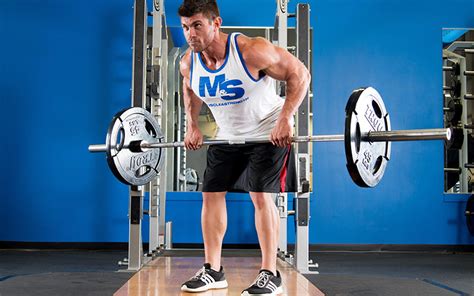Peak performance: How to scientifically break strength plateaus?

Understanding the Strength Plateau
Every dedicated lifter eventually encounters a strength plateau – a frustrating period where progress stalls, and your usual training methods no longer yield improvements. This isn’t a sign of failure but a natural physiological response. Your body is incredibly adaptive; once it has become efficient at a particular stimulus, it sees no further need to grow stronger or bigger. To continue progressing, you must introduce new, more challenging stimuli.
Scientifically, breaking a plateau involves manipulating key training variables to force new adaptations. It’s about outsmarting your body’s efficiency and compelling it to grow stronger. This article will delve into evidence-based strategies to help you shatter those barriers and reach new levels of peak performance.

Strategic Progressive Overload
Progressive overload is the fundamental principle of strength training. It means continually increasing the demands on your musculoskeletal system. When you hit a plateau, it’s often because you’ve exhausted the most obvious form of progressive overload: adding more weight. However, there are numerous other ways to apply this principle:
- Increase Repetitions: If you’re stuck at a certain weight for 5 reps, try to hit 6 or 7 reps.
- Increase Sets: Adding an extra set to an exercise can significantly increase total training volume.
- Decrease Rest Times: Shortening the rest interval between sets increases intensity and metabolic demand.
- Improve Tempo: Slowing down the eccentric (lowering) phase or pausing at the bottom of a lift can increase time under tension.
- Increase Frequency: Training a muscle group more often per week (e.g., twice instead of once) can stimulate more growth, provided recovery is adequate.
- Improve Technique: Sometimes, a plateau isn’t about strength but inefficient form. Perfecting your technique can allow you to lift more safely and effectively.
The Power of Periodization
Periodization involves systematically varying your training program over time to optimize performance and prevent overtraining. Instead of randomly changing exercises, periodization plans manipulate volume, intensity, and exercise selection in a structured manner. Common types include:
- Linear Periodization: Gradually increasing intensity (weight) while decreasing volume (reps/sets) over weeks or months.
- Undulating Periodization (Daily/Weekly): Varies intensity and volume more frequently, sometimes even within the same week (e.g., heavy day, moderate day, light day). This can be highly effective for preventing adaptation plateaus.
By cycling through different training phases, your body doesn’t get a chance to fully adapt to one specific stimulus, ensuring continued progress.

Prioritizing Recovery and Deloads
Overtraining is a major cause of plateaus. If your body isn’t given enough time and resources to recover and repair, it cannot get stronger. Recovery is just as crucial as the training itself. Implementing scheduled deload weeks can be a game-changer.
- Deload Weeks: Every 4-8 weeks, reduce your training volume and/or intensity significantly (e.g., 50-70% of usual). This allows your central nervous system (CNS) and muscles to recover, repair, and supercompensate, preparing you for new gains.
- Sleep: Aim for 7-9 hours of quality sleep per night. Growth hormone and testosterone, vital for muscle repair and growth, are predominantly released during deep sleep cycles.
- Nutrition: Ensure you are in a caloric surplus (if your goal is muscle gain) and consuming adequate protein (1.6-2.2g per kg of body weight) to support muscle repair and synthesis. Don’t neglect micronutrients and healthy fats.
Addressing Weak Links and Accessory Work
Often, a strength plateau isn’t due to overall lack of strength, but a weakness in a specific muscle group or movement pattern that limits your main lifts. Identify your weak links through careful observation and analysis.
- Video Analysis: Film your main lifts to spot form breakdown points.
- Accessory Exercises: Incorporate targeted accessory work to strengthen these weak areas. For example, if your lockout in a bench press is weak, include triceps extensions, close-grip bench, or board presses. If your deadlift struggles off the floor, focus on deficit deadlifts or pause deadlifts.
By shoring up these foundational weaknesses, you create a stronger, more stable base for your primary compound movements.

Optimizing Nutrition and Supplementation
Your diet fuels your performance and recovery. Neglecting it will inevitably lead to stalled progress.
- Caloric Intake: Ensure you’re eating enough. To build muscle and get stronger, most individuals need a slight caloric surplus.
- Macronutrient Balance: Prioritize adequate protein intake. Carbohydrates fuel your workouts and replenish glycogen stores, while healthy fats are crucial for hormone production.
- Hydration: Dehydration can significantly impair performance. Drink plenty of water throughout the day.
- Strategic Supplementation: While whole foods are paramount, certain supplements can aid in breaking plateaus:
- Creatine Monohydrate: Enhances ATP production, leading to increased strength and power.
- Caffeine: Can acutely improve performance and reduce perceived exertion.
- Beta-Alanine: Helps buffer lactic acid, allowing for more reps.

Mind-Muscle Connection and Intent
Beyond the physical, the mental aspect of lifting plays a significant role. Developing a strong mind-muscle connection means consciously engaging the target muscles during an exercise, rather than just moving the weight from point A to point B. This increases neural drive to the working muscles, potentially leading to better recruitment and growth.
- Focus on Contraction: During each rep, actively think about squeezing the muscle you are trying to work.
- Slow Down: Performing reps with a controlled tempo, especially the eccentric phase, enhances this connection.
- Visualize: Before a challenging set, visualize yourself successfully completing each rep with perfect form.
The intent behind your lifting can transform a mediocre set into a highly effective one, helping you push past perceived limits.

Conclusion
Breaking a strength plateau is not about working harder in the same old way, but about working smarter. It demands a scientific, systematic approach that addresses all facets of training: strategic progressive overload, intelligent periodization, diligent recovery, targeted accessory work, and optimized nutrition. By meticulously analyzing your current program and implementing these evidence-based strategies, you can not only overcome frustrating plateaus but also unlock new levels of strength and performance, continually pushing the boundaries of what your body can achieve.






